On a recent webinar, I shared feedback on 3 eCommerce websites, giving them suggestions for ways to drive more revenue through their site. At Brilliance, we focus on helping companies optimize and improve the effectiveness of their online web presence. By seeing what others are doing (or not doing) you can get ideas on how to drive more revenue through your eCommerce site. In this article, I am reviewing Aleias.com, one of the companies that volunteered to have their site reviewed. If you find this example helpful, check out the other site reviews on the webinar here.
Aleia’s - A Manufacturer of Great Tasting Gluten-Free Foods
Aleia’s founder, Kim Snow, got her start in the restaurant and baking business (her background includes training at the Culinary Institute of America). Aleia’s was created in 2008 after Kim was diagnosed with Celiac disease and had a passion for creating great-tasting, gluten-free products. Many of the items are crossover products – where even people who do not have a gluten intolerance love and prefer their products.
Today, Aleia’s products are available in 4,000 stores nationwide. Their online presence was created with the goal of making sure customers could find their products, even if they weren’t carried in a store near them. In addition, the team at Aleia’s recognized that not all stores carry the entire Aleia’s product line and wanted to ensure their products were available to customers when they wanted them.
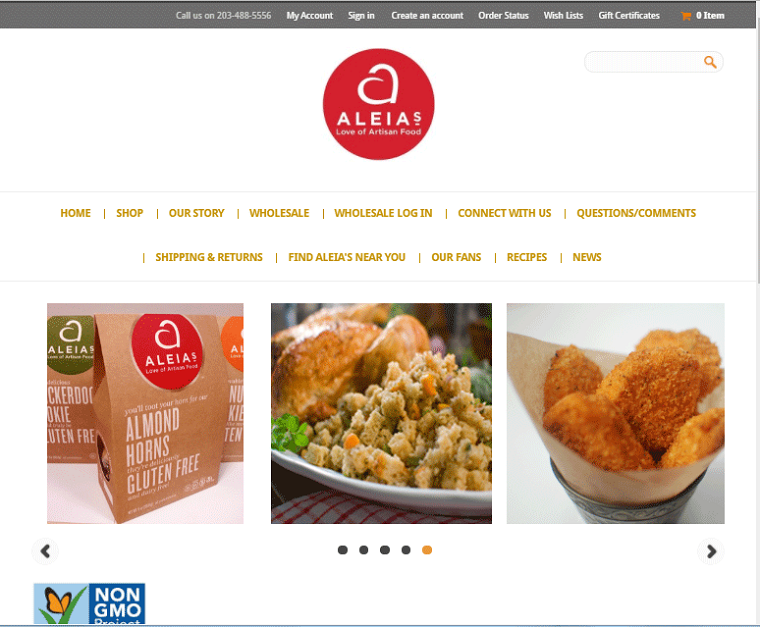
B2C and B2B – Meeting the Needs of Retail and Wholesale Customers
Like many other manufacturers, Aleia’s needs to sell both to consumers through their retail store as well as a need to sell to wholesale customers at discounted pricing. Aleia’s has chosen to set up two different stores to support this. On their wholesale site, you are unable to place an order or see your pricing until you log in. This is fairly standard functionality in a wholesale environment. It is possible to have B2B and B2C functionality out of the same store, where wholesale users login to see their special pricing and special products, but retail users are able to see pricing without logging in. Determining if you want two stores or one will depend on your products, your customers, the differences in how you want the B2B and B2C experiences to function, and the software you choose to implement the site. We provide some feedback on both the B2B and B2C sites below.
Site Improvement Recommendations
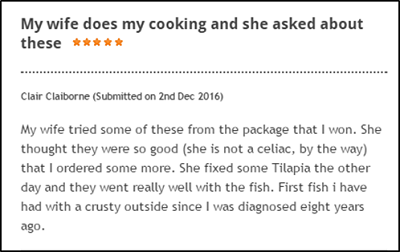 Product Reviews: One thing that Aleia’s is doing well is having customer reviews of their products set up on their site. User-generated reviews give people confidence in buying a product.
Product Reviews: One thing that Aleia’s is doing well is having customer reviews of their products set up on their site. User-generated reviews give people confidence in buying a product.
One challenge that can exist with product reviews is having the functionality for reviews on your site, but struggling to get customers to come back and review your product. If this is a problem for you, consider using a post-purchase email campaign that encourages customers to come back and review your product. Look for ways you can continually be inviting feedback throughout your process, and ensure the process of leaving a review is easy to do.
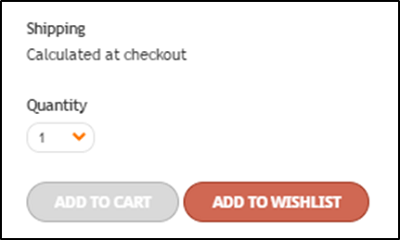 Use of Color: There is an opportunity for improvement in better using color to lead customers towards the desired goal. Right now their "Add to Wishlist" button is bright orange and their "Add to Cart" button is light gray. This leads your eye to the "Add to Wishlist" when Aleia’s primary goal is to have users add the item to their cart. It would be good to test out switching these two colors, and potentially look at a redesign of the product page on the whole with a focus on how to drive users towards a conversion.
Use of Color: There is an opportunity for improvement in better using color to lead customers towards the desired goal. Right now their "Add to Wishlist" button is bright orange and their "Add to Cart" button is light gray. This leads your eye to the "Add to Wishlist" when Aleia’s primary goal is to have users add the item to their cart. It would be good to test out switching these two colors, and potentially look at a redesign of the product page on the whole with a focus on how to drive users towards a conversion.
Improved Navigation: On the B2B wholesale site (http://aleiaswholesale.com/) there are 36 products listed on the product page but there isn’t a way for you to drill down to the specific product you are looking for.
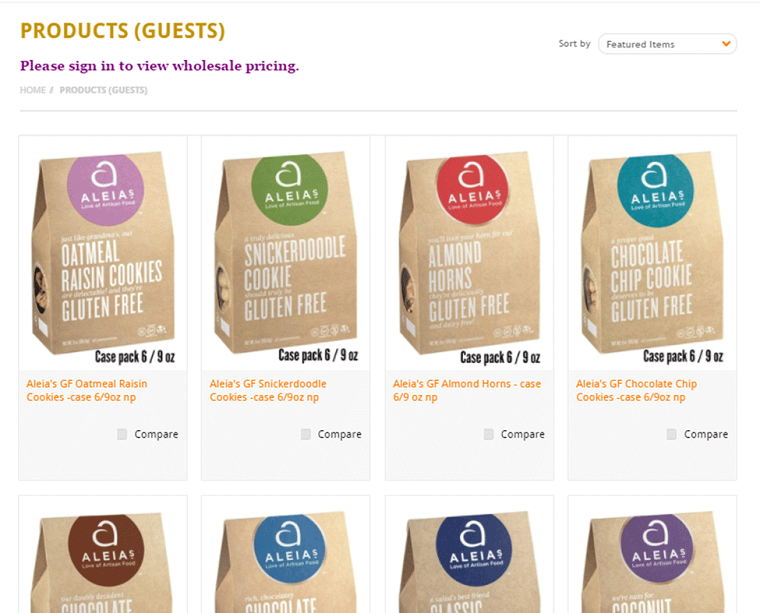
There is a “sort by” option on the top right, but outside of that, it would be helpful to have a way to see only what the customer is interested in. You could accomplish that by having reductive navigation on the left-hand side of the page to reduce to the specific product or sub-categories you are looking for. Reductive navigation can also be used on the search results pages to help users quickly find the product they are looking for.
Below is an example of left-hand reductive navigation on one of our clients’ sites (EdwardsIronWorkers.com).
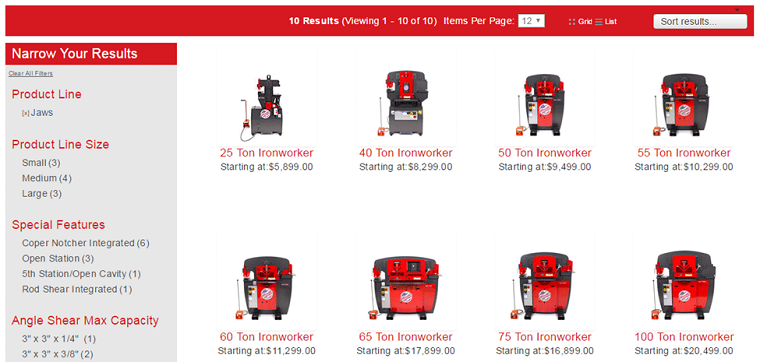
There’s More
On the webinar, we had additional feedback for Aleia’s site and we also reviewed 2 other sites. For more ideas and recommendations, watch the full webinar. For a detailed report showing how your website can generate more revenue, sign up for our site analysis report.


